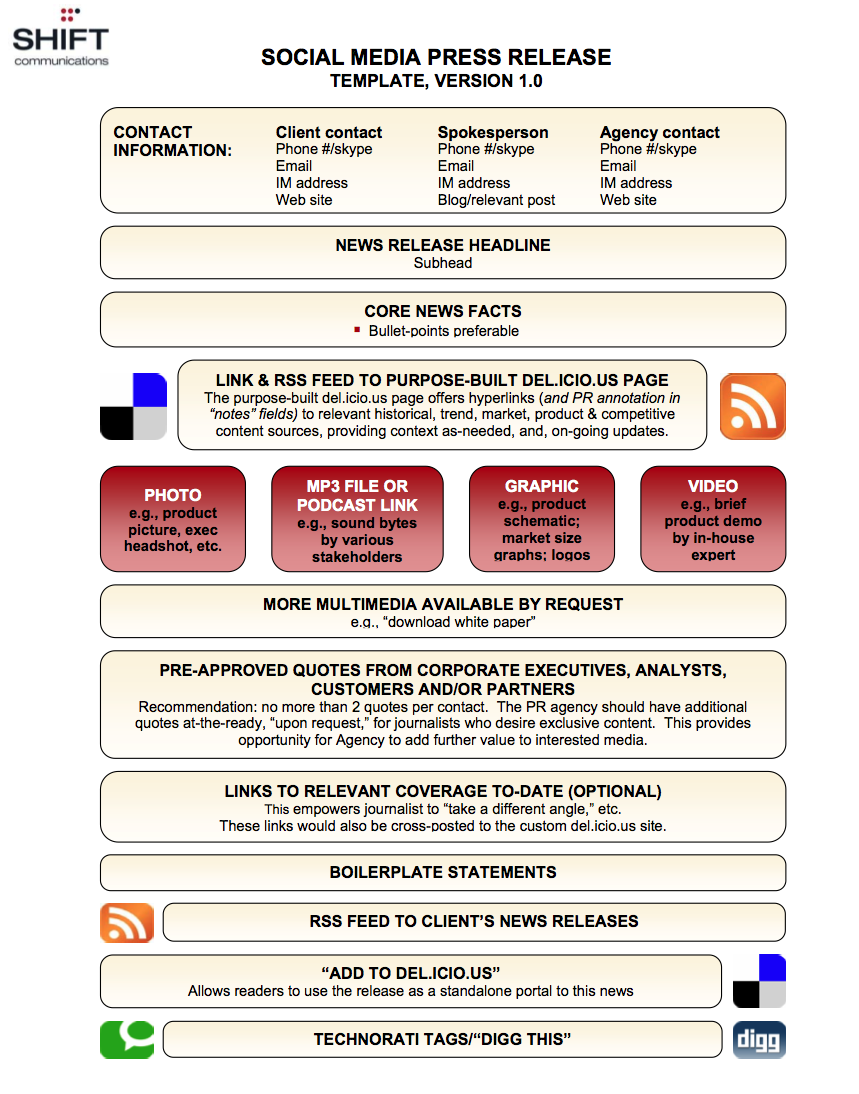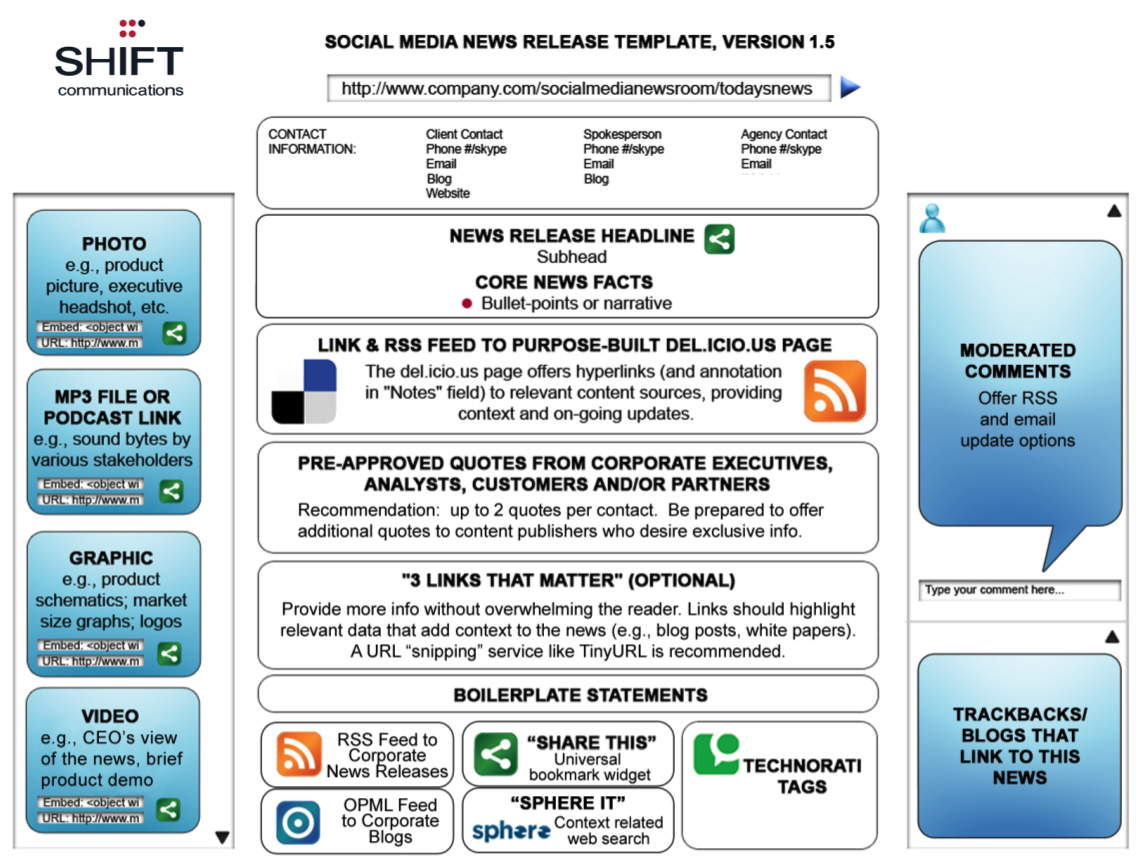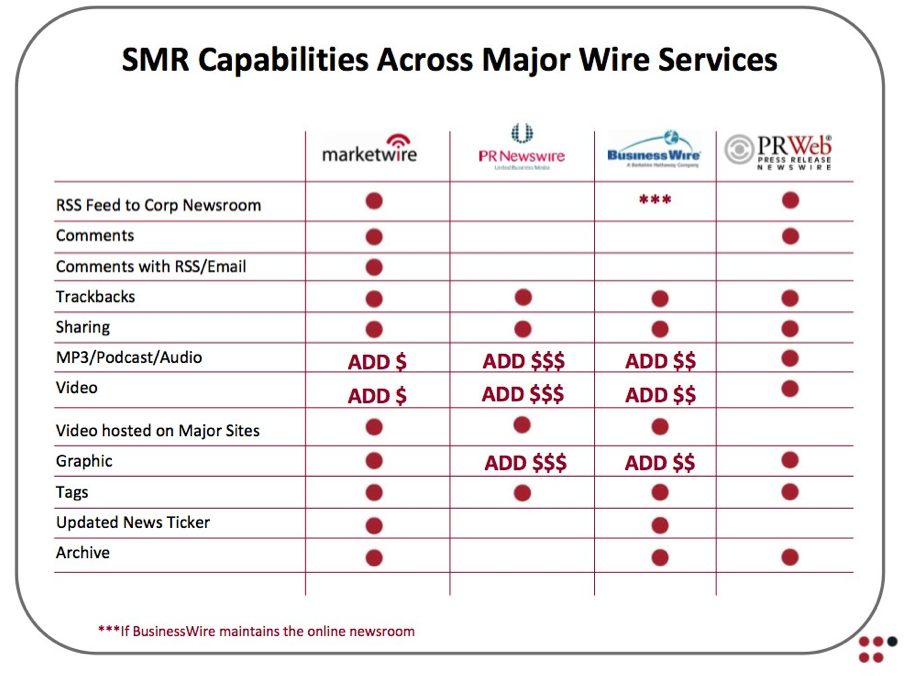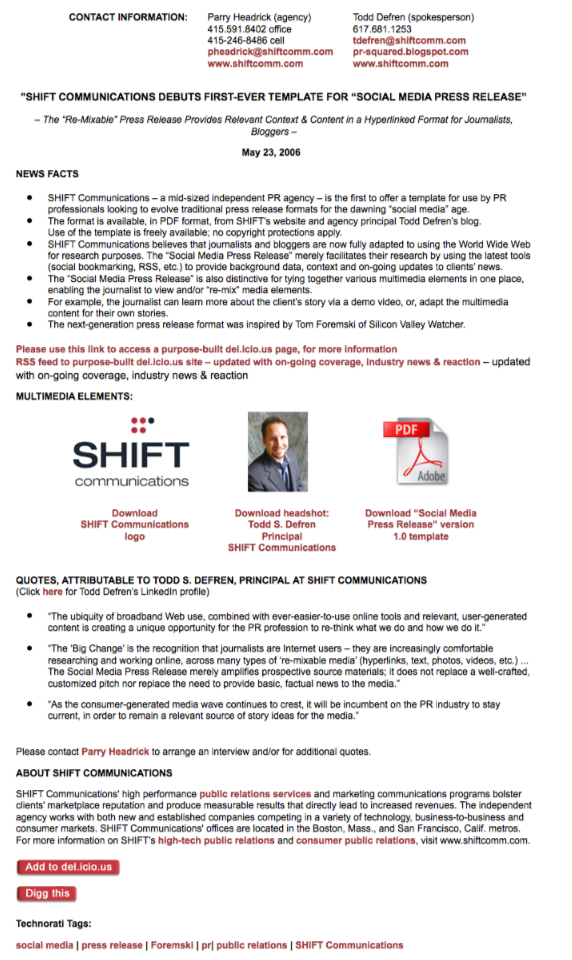 What’s your social media strategy when it comes to press releases?
What’s your social media strategy when it comes to press releases?
A new(ish) type of press release, generally referred to as a “social media release” is quickly gaining popularity. These types of press releases generally include many multimedia elements, enable the user to engage with the content on many different levels and allow the release to be shared in dozens of different ways.
Back in February 2006, Tom Foremski, journalist at SiliconValleyInsider.com proposed a new format for press releases, in an article called “Die! Press release! Die! Die! Die!”.
In this article, he explained to companies exactly what he was looking for in a press release, which would make his job as a journalist much easier:
- Deconstruct the press release into special sections and tag the information. This would allow the publisher to pre-assemble some of the news story and make the information useful.
- Provide a brief description of what the announcement is, but leave the spin to the journalists. The journalists are going to go with their own spin on the story anyway, so why bother? Keep it straightforward rather than spintastic.
- Provide a page of quotes from the CEO or other C-level execs.
- Provide a page of quotes from customers, if applicable.
- Provide a page of quotes from analysts, if applicable.
- Provide financial information in many different formats.
- Provide many links inside the press release copy, and also provide a whole page of relevant links to other news stories or reference sources.
- And tag everything so that I can pre-assemble my stories. The tags would be things like: recent share price, founders, first quarter revenues, analyst quotes, etc.
His clear, and not so subtle message was: “we should produce new media communications releases”.
[text_ad]
A few months after this, SHIFT Communications created what would be the future of social media press releases. In regards to the new template, they said, “Love it or hate it, what is important is that the banal, unhelpful, cookie-cutter press releases of yore have outlived their pre-Internet usefulness.”
This new press release format included content tagging, video, audio, graphics, photos, hyperlinks, rss subscription links, and social media bookmarking links. Plus the usual content.

This, right here, gave journalists every means of making the most out of an article, while making it interactive and engaging enough to be shared by mainstream users as well.
This was just a template, however. In practice, the social media press release looked more like this:
The problem back in 2006 with this type of press release was that it was nearly impossible to spread a social media release anywhere other then your own site or with existing contacts. Getting it “on the wire” was expensive, when possible at all.
In 2008, SHIFT updated the template to highlight the importance of engagement, emphasize flexibility and to account for technology changes.

These brainy templates by SHIFT caused wire services to start adapting to new types of releases due to the onslaught of Big Brands taking these templates and running with them.
For example:
Nutrisystem, Gatorade and Ford Motor Co. all jumped on the bandwagon (click the links to see their releases). GM Europe even started a Social Media Newsroom.
Still, many wire services require a hefty fee to use any type of multimedia elements, as seen by this comparison of the standard PR wire sites:
”]
This is where Social Media Press Release sites come in. They’re a whole new breed of sites that encourage making your press release as social as possible.
PitchEngine is a site dedicated to helping you build social media releases. They offer a full suite for both journalists and PR professionals. They offer a free service, where they only hold your release for 30 days, but they also offer paid services where they keep an archive of your releases ($35 month), or offer you your own customized newsroom ($50/month).
PitchEngine calls themselves “a social platform that enables PR to effectively package stories and share them with journalists, bloggers and influencers worldwide via the social web.” They are, however, not a wire service.
From our research, talking to popular social media experts and consumers, the best way to distribute a social media press release is through your own site, social bookmarking sites like Digg.com, and through your existing social networks.
Why? Because most wire sites who offer a full social media release are either very expensive or don’t offer enough. You can go for expensive, or you can use your social media standing to drive traffic in, and then back out of your social media press release.
However, the future is bright, and if the online world can adapt to social media releases themselves, there will certainly soon be a new breed of wire services exclusively for social press releases.
Speaking of press releases, we just launched a brand new free white paper today: Online Press Release Guidelines: How to Write Effective Press Releases for Online Distribution, Search Engines and Social Media. Download it today!
So, have you dabbled in social media press releases? How do you spread them? What has been the response?



